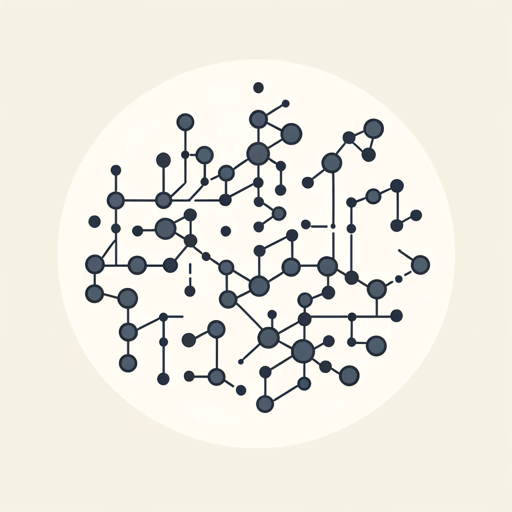ISHIKAWA - Problem Analysis Tool

Welcome! Let's identify the root causes together.
AI-powered root cause analysis.
Identify the root cause of...
Let's explore potential causes for...
Brainstorming session: What factors contribute to...
Organize the causes of...
Get Embed Code
Introduction to ISHIKAWA
ISHIKAWA is designed as an analytical tool that aids users in identifying the root causes of problems through the creation and analysis of Ishikawa diagrams, also known as fishbone diagrams. This methodological approach categorizes potential causes of problems into six major areas: Methods, Machines, Materials, Manpower, Measurement, and Environment. By guiding users through a structured brainstorming process, ISHIKAWA facilitates the visualization of potential causes and their relationships to the problem at hand. For example, in a manufacturing setting, if the problem is 'reduced product quality', ISHIKAWA would help in breaking down this broad issue into specific, actionable categories, such as examining the precision of manufacturing equipment (Machines) or assessing the training level of the workforce (Manpower). Powered by ChatGPT-4o。

Main Functions of ISHIKAWA
Problem Identification
Example
Identifying 'Increased Project Delays' in a software development team.
Scenario
ISHIKAWA guides the team through defining the problem precisely, ensuring everyone understands the specific issue to be addressed.
Categorization of Potential Causes
Example
For 'High Customer Churn' in a service company.
Scenario
ISHIKAWA assists in brainstorming and categorizing reasons into areas such as customer support (Manpower), service quality (Methods), or billing errors (Measurement), making the problem easier to analyze and address.
Visualization and Analysis
Example
Improving 'Equipment Downtime' in a manufacturing plant.
Scenario
ISHIKAWA helps in creating a fishbone diagram that visualizes all potential causes, facilitating discussions and deeper analysis to identify root causes and prioritize them for corrective actions.
Prioritization of Causes
Example
Reducing 'Waste Levels' in a production process.
Scenario
ISHIKAWA enables teams to evaluate the impact of different causes, using criteria such as frequency, severity, and detectability, to prioritize them for improvement efforts.
Ideal Users of ISHIKAWA Services
Quality Assurance Professionals
Individuals responsible for maintaining and improving product quality within manufacturing or service industries. They benefit from using ISHIKAWA by systematically identifying and addressing the root causes of quality issues.
Project Managers
Managers overseeing projects across various sectors can utilize ISHIKAWA to identify reasons for delays, budget overruns, or scope creep, thereby ensuring project objectives are met efficiently.
Operations Managers
Professionals responsible for the day-to-day operations in manufacturing, logistics, or service delivery. They can use ISHIKAWA to analyze operational problems, optimize processes, and enhance productivity.
Business Analysts
Analysts who need to dissect complex business problems, identify inefficiencies, or explore new opportunities. ISHIKAWA offers them a structured approach to break down issues into manageable parts for deeper analysis.

How to Use ISHIKAWA
1
Start by visiting yeschat.ai to access ISHIKAWA for a hassle-free trial, no sign-up or ChatGPT Plus required.
2
Identify and clearly define the problem you wish to analyze. This step is crucial as it sets the direction for the entire analysis.
3
Utilize the Ishikawa diagram tool provided to categorize potential causes of the problem into six major areas: Methods, Machines, Materials, Manpower, Measurement, and Environment.
4
Brainstorm with your team or individually to list possible causes under each category. The tool facilitates collaborative input for a comprehensive analysis.
5
Review and analyze the completed Ishikawa diagram to prioritize root causes for further investigation or action. Use this as a basis for solution development and continuous improvement.
Try other advanced and practical GPTs
Latest Imitation Trend Game Maker Assistant
Elevate Your Game with AI-Powered Design Insights

Free Forex Margin Calculator (ESMA Leverage)
AI-driven insights for smart trading

DomainGPT
Innovate Your Identity with AI

MixerBox Calendar
Streamline Your Schedule with AI-Powered Precision

Dr. Emma Carewell
Revolutionizing Healthcare with AI Expertise

Vsitto
Your AI-Powered Journey Designer

Game Buddy
Engage, Learn, and Play with AI

AI Assisted Doctor
Empowering healthcare with AI-driven insights.

Skynet
Empowering Innovation with AI

AFL Premiership Hero
Live your AFL premiership dream

Graph Text Generator
Transforming Data into Knowledge with AI

Italia Insider
Your AI-powered guide to authentic Italy

Frequently Asked Questions about ISHIKAWA
What is ISHIKAWA primarily used for?
ISHIKAWA is designed to assist in identifying and analyzing root causes of problems in various domains, utilizing the Ishikawa or fishbone diagram approach to categorize potential causes.
Can ISHIKAWA be used for non-technical problems?
Yes, ISHIKAWA is versatile and can be used to address a wide range of problems, not just technical but also organizational, process-related, and interpersonal issues.
How does ISHIKAWA differ from traditional problem-solving tools?
ISHIKAWA focuses on a visual and structured approach to root cause analysis, facilitating a comprehensive exploration of all potential causes categorized into specific areas, which is not always the case with other tools.
Is ISHIKAWA suitable for solo use or does it require a team?
While ISHIKAWA can be effectively used by individuals, its collaborative features and the nature of brainstorming potential causes often make it more powerful when used by a team.
How can I ensure the most effective use of ISHIKAWA?
Ensure that you clearly define the problem, involve stakeholders or team members for diverse insights, and be thorough in exploring each category of potential causes for a comprehensive analysis.
